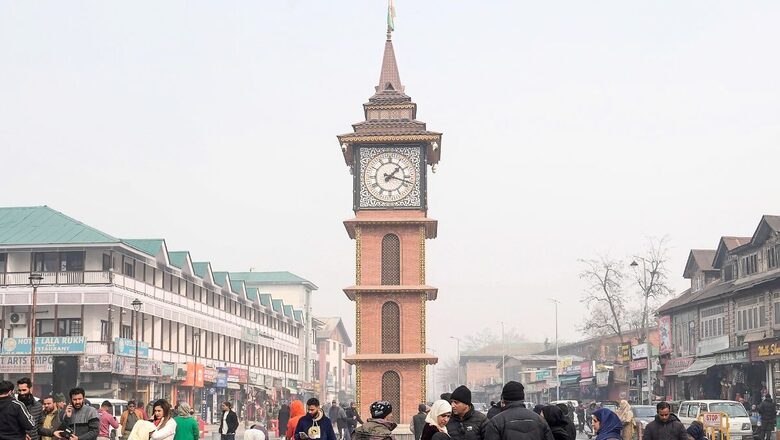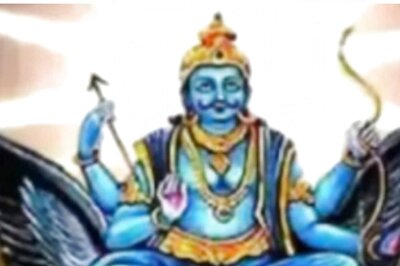
views
Eighteen years ago, I found myself at an event marking the death anniversary of former Prime Minister Rajiv Gandhi. It was supposed to be a mundane assignment, surrounded by senior Congress leaders and ministers. The then Chief Minister of Jammu and Kashmir, Ghulam Nabi Azad, was running late. As a young, restless journalist, I was hoping this tedious task would end soon. Unbeknownst to me, fate had other plans.
A policeman, lugging two AK-47 rifles, made his way to the podium where the VIPs were seated. The audience grew restless, waiting for the chief guest. Meanwhile, state ministers began their monotonous speeches. I, too, was growing anxious, eager for this “boring assignment” to end. Little did I know, this day would turn my life on its head.
As a budding journalist, just a few years into the profession, I was thrilled to share the stage with Kashmir’s veteran journalists. Feeling a tad proud, I asked a fellow scribe about the policeman with two rifles. “His colleague must have gone for a nature’s call,” he replied nonchalantly.
The afternoon sun blazed, making the wait excruciating. News arrived that the chief guest, delayed by a last-minute visitor at his residence, was finally on his way. Inspector General of Police, Kashmir, K Rajendra Kumar, a familiar face, arrived at the venue. We exchanged pleasantries over a barbed wire fence, promising to catch up over tea later.
With the chief minister’s arrival imminent, my excitement was palpable. This was my first time covering such a high-profile event. Yet, I was irked knowing this story wouldn’t fetch me a byline. Then, it happened.
A deafening bang at the venue entrance shattered the air. “No, this can’t be happening,” I thought, as chaos erupted. The policeman with two rifles began firing at senior officers. I watched in horror as Mr Rajendra and others fell, bullets zipping past my head. In the melee, I was wounded.
As the police scrambled to rescue VIPs, my colleagues and I were left to our own devices. A brave journalist drove an ambulance into the venue, rescuing us from the onslaught of bullets and bombs. Despite my injuries, I rushed to a cybercafé, covering my wounds with a handkerchief, to file my story. Survival felt like a victory.
This was a fidayeen attack (suicide attack) by Lashkar-e-Taiba terrorists. Seven people, including policemen, were killed and 22 others injured in the attack. Mr Rajendra survived, but his journey to full recovery was long, with an extended stay in the hospital. He later rose to be the Director General of Police and, post-retirement lives with his family in New Delhi and Hyderabad.
The following day, my account was emblazoned on the front page of the national newspaper I worked for. The next day, a commendation from the editor-in-chief arrived. It was a watershed moment in my career.
Last week, I returned to Sher-e-Kashmir Park after 18 years. Alive to tell the tale, I reflected on that harrowing day and the transformative journey since. Kashmir today is a far cry from the terror-stricken land of my youth. Gun-toting terrorists once roamed the streets freely. I recall Afghan and Pakistani terrorists, some as young as 12, loitering in every nook and corner of Kashmir.
Back then, porous borders with Pakistan allowed a flood of Afghan and Pakistani terrorists into Kashmir. Trained by the Pakistani Army, they were promised Kashmiri brides as part of their so-called “holy jihad.” The streets echoed with massive processions chanting “hum kya chahte aazadi” (we want freedom), with youth flashing victory signs.
The 1990s and early 2000s were the worst periods of terrorism in Kashmir. It was a terrible time for anyone growing up in the region. This peak of terrorism was followed by a sudden lull, and then a new form of agitational terrorism began. Kashmir witnessed the worst form of agitational terrorism in 2008, which gave birth to stone pelting. The 2008 Amarnath Land row agitation was followed by the 2010 unrest, where stone pelting became a norm.
From 2008 to 2019, Kashmir was known for stone pelting. Nobody would discuss the natural beauty Kashmir was bestowed with; every news channel and newspaper reported hundreds of stone-pelting incidents daily. Security forces, civilians, government employees—everyone was a target. Any journalist who dared to write against this menace became a target. Patriotism was considered a crime in Kashmir. Many had to leave the profession, and many, like me, who could not compromise on their principles, shifted base to safer locations.
It took immense sacrifice from our security forces to cleanse the valley of these foreign militants. Since August 5, 2019, Kashmir has witnessed an unprecedented calm. Stone pelting is a thing of the past, and casualties among security forces and civilians have plummeted.
Kashmir has changed, and for the better. Long queues at polling stations are a testament to the people’s desire for peace. Record-breaking voter turnout in Srinagar and Baramulla, my birthplace, signals a significant shift. Baramulla, once a terrorist hotspot, now outpolls many constituencies in Maharashtra and Uttar Pradesh. This surge in voter participation indicates a collective realisation: the path of violence leads nowhere.
For decades, Pakistan used Kashmiri youth as cannon fodder in its proxy war. Now, the people know their future lies with India. By voting in large numbers, Kashmiris have chosen ballots over bullets.
Eighteen years ago, I couldn’t have imagined the peaceful Kashmir I see today. Having lived through the worst, I am cautiously optimistic. The scars remain, but the valley is healing. Peace, fragile as it may be, is here, and I hope it stays.
As my cab driver in Srinagar replied when asked about changes in the valley post-August 5, 2019, “The bloodshed has stopped.”
Views expressed in the above piece are personal and solely that of the author. They do not necessarily reflect News18’s views.




















Comments
0 comment